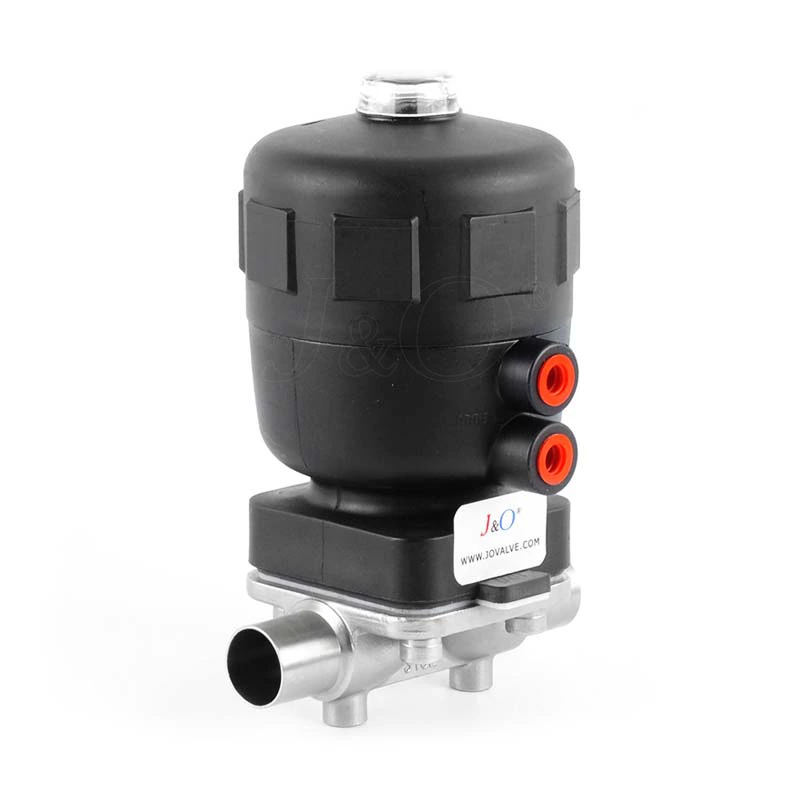Sanitary Diaphragm Valves Are Easy To Disassemble And Repair Quickly
Sanitary Diaphragm Valve can be remotely controlled by the drive device or manually operated by the handle. The sanitary diaphragm valve uses the valve stem to press the rubber membrane directly on the valve seat to cut off or connect the vacuum system.
The sanitary diaphragm valve adopts the connection forms of slip-on flange connection, quick-release flange connection and welding connection. The welding connection is divided into welding type I connection (i.e. welding at both ends) and welding type II connection (i.e. welding at one end and inserting at the other end).
Due to the structural design of the diaphragm valve itself, it is particularly suitable for ultra-pure media or heavily polluted, very viscous liquids, gases, corrosive or inert media. When combined with control equipment, the diaphragm valve can replace other traditional control systems, especially for solid and easily contaminated inert media.
The sanitary valve adopts the clamp type, which has the advantages of simple structure, beautiful shape, quick assembly and disassembly, rapid switching, flexible operation, small fluid resistance and reliable use.
All steel parts are made of acid-resistant stainless steel, and the seals are made of food silicone rubber or polytetrafluoroethylene, which meets food hygiene standards. It is widely used in many industries such as food, brewing, beverages, dairy products, fine chemical pharmaceuticals and bioengineering.
The sanitary diaphragm valve is equipped with a flexible diaphragm or a combined diaphragm in the valve body and the valve cover, and its closing part is a compression device connected to the diaphragm. The valve seat can be a weir shape or a pipe wall of a straight-through flow channel. The advantage of the sanitary diaphragm valve is that its operating mechanism is separated from the medium passage, which not only ensures the purity of the working medium, but also prevents the possibility of the medium in the pipeline impacting the working parts of the operating mechanism.
In addition, no separate seal of any form is required at the valve stem unless it is used as a facility in controlling harmful media. In the sanitary diaphragm valve, since the working medium contacts only the diaphragm and the valve body, both of which can be made of a variety of different materials, the valve can ideally control a variety of working media, especially suitable for media with chemical corrosiveness or suspended particles. The operating temperature of the sanitary diaphragm valve is usually limited by the materials used for the diaphragm and the valve body lining, and its operating temperature range is approximately -50 to 175°C.
The sanitary diaphragm valve has a simple structure, consisting of only three main parts: valve body, diaphragm and valve head assembly. The valve is easy to disassemble and repair quickly, and the diaphragm can be replaced on site.
